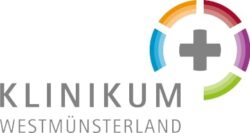Klinikum Westmünsterland GmbH accelerates administrative processes
Klinikum Westmünsterland GmbH is a healthcare group headquartered in Ahaus, in the district of Borken. The company operates six hospitals located in Ahaus, Vreden, Stadtlohn, Bocholt, Rhede, and Borken, with a total of 1,485 planned beds and around 55,000 inpatients per year. In addition, it runs six senior and nursing care centres with an average of 80 residents each, four day care facilities, and a subsidiary, Gesundheitszentrum Westmünsterland GmbH, which provides physiotherapy and occupational therapy services. In total, Klinikum Westmünsterland GmbH employs approximately 5,500 staff.
- 80000 Invoices are received annually at the sites of Klinikum Westmünsterland.
- 55000 Patients receive inpatient care each year.
Centralised Invoice Processing in Ahaus
The Borken district stretches across approximately 1,400 square kilometres in the western Münsterland region, along the Dutch border. Six hospitals, six care homes, and four day care centres have joined forces in a decentralised structure under the umbrella of Klinikum Westmünsterland GmbH. While this decentralisation offers many advantages for providing comprehensive regional healthcare, it has also posed certain challenges in the past. “We had a wide range of addresses, which created a significant administrative burden,” explains Werner Lentfort, Commercial Director of the Klinikum. One area particularly affected was invoice processing.
More than 80,000 incoming invoices are received each year across the various sites of Klinikum Westmünsterland GmbH. In the past, most of these arrived in paper form. “This created a major logistical effort for us, as our administrative departments, including financial accounting, are centralised in Ahaus,” Lentfort explains.
Previously: Challenges in Invoice Handling
Before the introduction of SAP-based invoice processing (ERV), all incoming invoices had to be physically transferred from the decentralised sites to Ahaus. “This repeatedly led to issues – invoices went missing, early payment discounts were missed, or reminders were received,” Lentfort recalls. “To improve this process, we launched the ‘Digital Invoice Processing’ project.”
Digitalisation and Centralisation: A Long-Term Strategy
Efforts to digitalise and centralise processes at Klinikum Westmünsterland have been ongoing for many years. The organisation has steadily developed its digital infrastructure while also pursuing synergies through consolidation. “It’s an ongoing process for us. Over the past 10 to 15 years, we’ve increasingly digitised our documentation,” says Lentfort. This initiative gained significant momentum in the last five years, starting at the group’s largest site in Bocholt.
Centralised Procurement and Logistics
Procurement processes have also undergone transformation. “In recent years, we’ve optimised and standardised many aspects of centralisation,” says Mathias Tenkamp, Sales Manager Healthcare & Welfare at d.velop. A key example is the central warehouse established in Ramsdorf, where all goods for the Klinikum are stored and distributed to the various facilities. This was a major step forward for invoice processing, as all related documents now arrive at a central location.
Digital Invoice Processing: A Key Milestone
Ultimately, it was Werner Lentfort and the Managing Director of Klinikum Westmünsterland – who also oversees IT – who recognised the need for improvements in invoice handling. “Alongside the digitalisation of patient records, which we’ve already been advancing, digital invoice processing was a crucial step to reduce logistical effort,” Lentfort concludes. The goal was also to make process steps more transparent and to speed up internal and external information flows. “And not least, to avoid losing early payment discounts due to long processing times – that’s why the project was initiated.”

In addition to the ongoing digitalisation of patient records, digital invoice processing represented a crucial step towards reducing logistical complexity.
Werner Lentfort
Commercial Director
Klinikum Westmünsterland
Selecting a Provider for Invoice Processing: d.velop as a Trusted Partner
To implement the full ERV process within SAP, a suitable provider was needed. One candidate was already well known within the organisation: d.velop. “That decision was actually quite straightforward,” says Werner Lentfort, Commercial Director, “as we’ve been working with d.velop for years – for example, in the area of digital archiving and the digitalisation of patient records.” Several systems were reviewed, but ultimately the project was awarded to d.velop, “also to expand our existing collaboration.”
Integration of ERV into SAP, Amor3 and Wave
“It was a standard SAP invoice processing project,” explains Siggi Piastowski, Key Account Consultant at d.velop. However, there was one key difference: “The client uses two additional third-party systems that are essential to their operations.” These are Amor3, a procurement system commonly used in pharmacies and hospitals, and the lifecycle management system Wave. “The challenge was to develop an extension that would not only transfer invoices to SAP, but also to these other applications, enabling partial automation of related processes.”
Successful Project Implementation Despite the Pandemic
The project phase following provider selection unfolded differently than previous d.velop projects. “Implementation began in 2020, during the COVID-19 pandemic. The first meeting was held in person, but all subsequent sessions took place via video conference,” recalls Werner Lentfort. “The entire project had to be managed remotely, with meetings held exclusively online and occasionally by phone.” Despite minor delays, the project was successfully completed within about a year.
d.velop: Reliability and Strong Collaboration
Werner Lentfort particularly values the reliability of d.velop’s team. “We already knew them from previous projects,” he says. “Their quick response times and strong collaboration – not just professionally, but also personally – really impressed us. That combination ultimately convinced us.”
Biggest Challenge: Diversity of Facilities
Were there any major hurdles during implementation? Lentfort doesn’t hesitate: “The biggest challenge was certainly the diversity of our facilities,” he reflects. “We had 15 mailrooms receiving paper invoices. Aligning all of them, training staff, and centralising the entire concept was a significant task given the number of locations.” Another major task, still underway, is the integration of Amor3 as a third-party procurement system.
Digital ERV Brings Greater Transparency and Efficiency
The efficiency gains are clear: “One noticeable benefit is the transparency – invoices are accessible at any time,” says Lentfort. “Reminders are now rare, and the time-consuming search for invoices has been almost completely eliminated.” He adds that the loss of early payment discounts has been significantly reduced, and payment and posting processes have become much more streamlined. “I’ve received only positive feedback from everyone involved.”
In day-to-day practice, the increased transparency is evident: invoices can be accessed at any time, reminders are now a rarity, and the time-consuming search for documents has been almost entirely eliminated.
Werner Lentfort
Commercial Director
Klinikum Westmünsterland
Mostly Positive Response to ERV – Few Reservations
There were no major reservations within the organisation regarding the introduction of digital invoice processing in SAP, according to Werner Lentfort. In fact, the response was largely positive. “Of course, some departments had concerns,” he notes, “but these were not about the digitalisation of invoice processing itself, rather about the integration of third-party systems such as the lifecycle management tool Wave.” The issue was that certain process steps would be handed over. “They are then handled centrally and digitally, and can no longer be controlled directly.”
Training Initiative for 300 ERV Users
To ensure widespread understanding of the new software, a comprehensive training initiative was launched. “We offered training sessions at each hospital site, reaching around 300 users,” recalls Werner Lentfort. “The sessions were conducted by members of the project working group.” A dedicated project team oversaw the implementation. In addition, a centrally developed and coordinated PowerPoint presentation and instructional videos were made available online in advance.
Further Collaboration with d.velop Planned
Further collaboration between Klinikum Westmünsterland GmbH and d.velop is firmly planned. While “not currently in the commercial area,” Lentfort explains, “there are rough plans in the HR department – for example, digital payslips and similar initiatives.” At present, he says, the focus is clearly on the digitalisation of patient records and medical processes. “And that naturally defines the priorities in our partnership with d.velop.”
Engaging Staff Early and Keeping Them Informed
As a key success factor for the ERV digitalisation project – and one that applies to all digitalisation efforts – Werner Lentfort offers this advice: “It’s essential to involve all relevant staff early on and include them in the project group.” Ideally, he explains, “all departments and sites should be represented to ensure a comprehensive project perspective. And it’s important to inform as many experts and stakeholders at each location as early and continuously as possible.”
Software-Demo
Learn More About d.velop Software
Request your personalised live demo of the d.velop software with just a few clicks. Get a live demonstration of the software and ask your questions directly. Simply fill out the form and we will get back to you.

